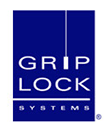Industry News
IES TM-30-15 Is Generating Serious Debate, National Lighting Bureau Panelists Reveal
March 14, 2016
The Color-Rendering Index (CRI) is a well-established tool used to indicate how accurately a given light source renders color when compared to a "reference" light source. The higher a given light source’s CRI (rated on a 0% to 100% scale), the better its color-rendering ability is assumed to be.
With few exceptions, lighting professionals agree that CRI is a simplistic and often-misleading rating system. As such, a “high-CRI” light source that will, theoretically, help people perceive an object’s colors as they “really” are (as defined by the color impacts of the reference light source), may actually distort the colors. This potential exists because the color-rendering process involves many more considerations than those incorporated in CRI. This widely recognized deficiency has for decades led lighting researchers on a quest for a better metric. Has one finally been found? “Yes,” some lighting-industry leaders say. Others say, “No.”
The new metric being addressed is conveyed via the Illuminating Engineering Society’s (IES’) Technical Memorandum 30 (TM-30-15), the subject of spirited dialogue among three well-known lighting-industry leaders who comprised a keynote panel moderated by EdisonReport Publisher Randy Reid at the National Lighting Bureau’s annual lighting colloquy. The panelists were:
Mark S. Lien, LC, CLEP, CLMC, HBDP, LEED BD&C (Director, Government and Industry Relations, OSRAM SYLVANIA, Inc.);
Kevin W. Houser, Ph.D., P.E., LC, LEED AP (Professor of Architectural Engineering, The Pennsylvania State University); and
Mark S. Rea, Ph.D. (Professor and Director, Lighting Research Center, Rensselaer Polytechnic Institute).
Their discussion is now available for viewing at no charge on the National Lighting Bureau website.
By way of background, “TM-30” sets forth a voluntary computational procedure for evaluating light-source color rendition. The IES – a long-time Bureau sponsor – characterizes TM-30 as a metric that consolidates and synthesizes more than a dozen research efforts that have been ongoing for decades. It quantifies a light source’s fidelity (closeness to a reference color) and gamut (increase or decrease in chroma or color purity). It also generates a color-vector graphic that indicates average hue and chroma shifts, to help users interpret the values of Rf (the fidelity index) and Rg (the gamut index). TM-30 includes a software tool to help users calculate and display results.
Dr. Houser, a TM-30 proponent, acknowledged that TM-30 is not a final answer. He sees it as a significant step forward that lighting designers, manufacturers, and researchers can use now to improve lighting-system specification, light-source spectral design, and research on color perceptions. He believes that, through experience, these groups can help establish criteria for the TM-30 fidelity and gamut measures, and that their input may lead to improvements in the system.
Dr. Rea confessed to being “let down” by TM-30, because the metrics have not yet been validated. As such, he said, it is not clear that the proposed metrics substantially reduce uncertainty about what constitutes good color rendering. Dr. Rea went on to state his belief that there is no functional difference between the proposed fidelity metric and the well-established CRI. More seriously, he worries that the proposed saturation metric and associated graphics could actually mislead users.
Mr. Lien noted that proper application of TM-30 will require education, because the new procedure is more complex than CRI. While lighting specifiers will be motivated to learn and use improved color metrics, he said, that’s not likely to be the case for most electrical distributors, electrical contractors, interior designers, architects, and others for whom lighting is just one of many indoor and outdoor systems they have to deal with. For them, mastering the increased complexity of TM-30 will require a steep and lengthy learning curve, Mr. Lien said, meaning that some users will be slow to embrace the new procedure. He expressed his concern that problems could arise were TM-30’s widespread use to proceed before the new procedure receives international acceptance. “We will have to live for decades with whatever metric is adopted,” Mr. Lien said. “While this process is painfully slow, it is worth our patience to vet this now. Additional change after TM-30 is globally accepted would create an unacceptable level of confusion for the lighting community. Industrywide change is not easily achieved.”
Obtain more information about the Bureau by visiting http://www.nlb.org or contacting its staff at [email protected] or 304-870-4249.









































